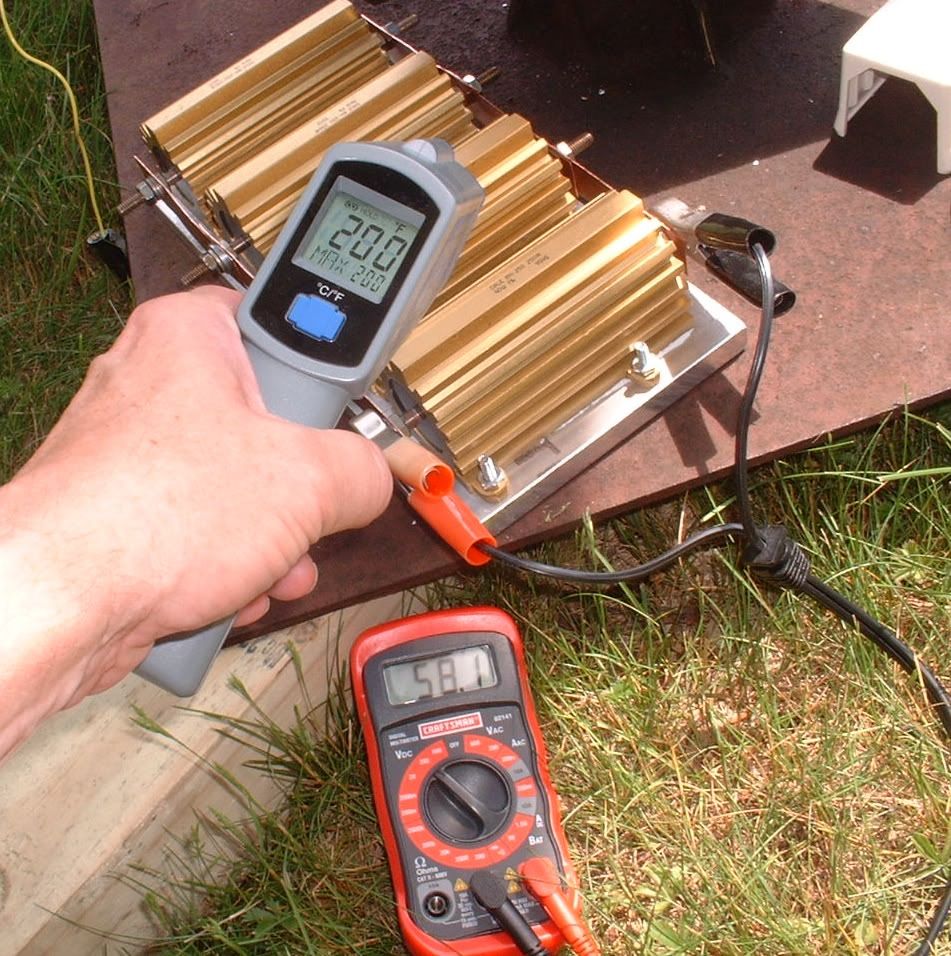Finished building the 10 Ohm resistor today and it shows exactly 10.0 Ohms
on both of my good meters.
The weather is warm. 83 degrees and humid. At 14:20 eastern,
there was light high clouds. The backside of the panels was 134 degrees F.
Here's the test setup, on the base of the mount.

This pic was taken when the clouds were thick..
Max voltage into the load was 65.5v, and
average was 63 to 64.5
65.5v / 10 ohm = 6.55 amps or 429 watts of heating.. (1,464 BTUh)
The less than idea conditions cost us about 71 watts (242 BTUh).
(That 71 watts off the array's rating of 500 watts).
If we get some clear skies during the next few days, I'll do another test.
Hopefully, when I install the load on the boiler, my cable won't have high losses.
In any event, the power cable's resistance is going to add to the 10.0 ohms.
That might allow a bit higher voltage from the panel..?.
Moving the power-point back from the downside of the knee.?.
If that makes the panel power a bit greater, it might over-come
the power line loss, and present a high voltage at the load..
Max temperature of the heater plate was
266 degs F.
The heatsink compound was bubbling out, so I shut it off.
It heated the rusty steel plate under the heater (in one corner) to 143 degs F.
(The other side in the shade was at 93 degs F).
If I can get a good thermal bond with the boiler, the max temperature shouldn't get so high..
After all, it will be trying to heat a lot of steel and 76 gallons of water..